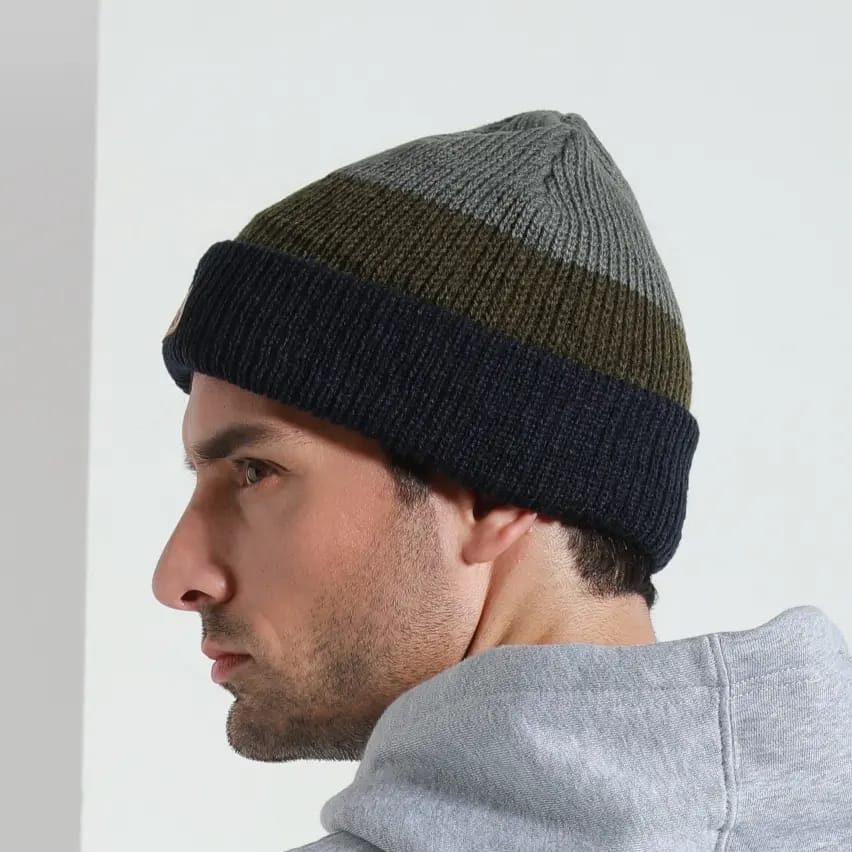Table of Contents
ToggleIntroduction: The Importance of Hats in Spanish and German Culture
Begin a fascinating voyage through the fascinating world of winter hat styles! Hats may appear simple enough at first glance, yet they play an intricate cultural role across nations around the globe – in this post we explore these traditions in two vibrant cultures such as Spain and Germany.
Imagine strolling down sun-kissed streets in Madrid or sipping hot Gluhwein at an energetic Christmas market in Berlin; both countries possess distinct fashion identities that play out through winter hats to express cultural distinction.
Bring along your beanie or beret as we explore how Spanish and German winter hat styles reflect their rich cultural traditions while celebrating individuals. Are you up for this fashionable adventure with me? Join me as we uncover this stylish adventure together!
Traditional Winter Hat Styles in Spain
Spain boasts a rich cultural legacy when it comes to winter hat styles, reflecting in their vast selection of headwear. One iconic example is Andalusia’s wide-brimmed “sombrero cordobes.” Often worn during celebrations or festivals, its intricate embroidery adds elegance and vibrance.
Berets (boina) have long been worn in Spain during winter to provide warmth from icy winds while making a fashion statement. Made of wool, boinas can be found throughout Spain but hold particular meaning in Basque Country where they signify tradition and cultural identity.
Catalonia boasts another distinctive winter hat known as a barretina; this red cap with its flat crown represents Catalan pride and was traditionally worn by working-class men. Today, its presence can still be found during festivities like La Diada de Catalunya as a sign of regional solidarity and is worn proudly atop heads as an expression of regional pride.
Germany stands in contrast with Spain in offering vibrant and ornate winter hats; instead it prefers practical designs suited for combatting harsh winters, like the “Schwarzwaldmutze,” more commonly referred to as Black Forest cap or Schwarzwaldmutz in southern Germany’s Black Forest region. This woolen cap features ear flaps that can be tied underneath one’s chin as extra protection from biting cold winds.
Another classic German garment is the Trachtenhut (translated as traditional folk hat). Styles may differ based on region across Germany but typically feature felt or straw construction with decorative feathers or cording for decoration, often worn during festivals like Oktoberfest. These headgear can also serve as traditional attire at cultural events where traditionalism reigns supreme such as concerts.
While Spanish winter hats tend to boast elaborate craftsmanship and vibrant hues, German styles tend to prioritize functionality and durability – both nations’ winter hat styles are nevertheless distinct and distinctive.
Traditional Winter Hat Styles in Germany
Germany is well known for its wide array of winter hat styles. From the iconic “Schwarzwaldhut” to cozy Pudelmutze designs, their traditions as winter headgear makers span both landscape and age.
One popular traditional style from Black Forest region is known as a Bollenhut; this distinctive hat with red pompoms symbolizing wealth and fertility is often worn by single women for festivals or special events.
“Alpiner Hut” hats are another traditional German winter style associated with Alpine culture and often feature felt or leather brims decorated with feathers, cords, or pins to decorate its look. Commonly associated with outdoor activities such as skiing or hiking.
Warmth and comfort come hand in hand in Germany during cold winter months; for this, a “Pudelmutze” knitted cap covering both ears, usually featuring colorful patterns or pom-poms is the answer. A Pudelmutze can often be seen all across Germany!
Contrasting these cozy options are more formal styles such as the luxurious “Pelzmutze”. Once worn by nobility in colder climates, this luxurious headpiece adds sophistication to any winter ensemble.
Germany’s craftsmanship can be seen in every stitch of their traditional hats – be it intricate embroidery, elaborate trimmings or unique materials like wool or fur – while their attention to detail remains paramount.
Traditional German winter hats not only offer warmth, but are also symbols of cultural pride for many Germans today. An integral component in celebrating traditions passed down over generations, these wintertime headpieces represent German cultural pride while providing warmth.

Similarities and Differences Between Spanish and German Winter Hats
Winter hat styles in Spanish and German culture vary significantly to reflect their distinct traditions and climates, and there are noticeable distinctions that distinguish each from one another that truly represent its respective culture. While both styles share certain similarities, each represents its native environment through unique design elements that make each style truly representative of itself.
As for similarities between Spanish and German winter hats, both prioritize warmth and functionality. In Spain, traditional woolen caps called “gorros” cover ears snugly to shield from cold winds; similarly in Germany fur-lined trapper hats called “Schapkas” are popular choices to brave colder conditions.
These styles differ greatly in design and decoration: Spanish gorros tend to feature minimal embellishments such as pom-poms or braided cords while German Schapkas often boast elaborate embroidery or patterns on their exterior surfaces.
Spanish gorros feature tight beanie designs that hug closely around the head; in comparison, German Schapkas feature wider brims with flaps that can fold down over not only ears but also parts of the face for full coverage.
Cultural factors may play a part in these variations of style as well, including climate and historical considerations. Spain has milder winter temperatures which necessitate less extensive coverage compared to Germany with colder temperatures; also likely contributing is Germany’s proximity to Russia which likely resulted in them adopting fur-lined hats similar to those seen there.
Fashion trends continue to develop across traditional cultures like Spain and Germany, incorporating contemporary materials like synthetic fibers or trendy designs inspired by international fashion influences into winter hat styles of today.
Spanish designers may experiment with bolder hues or modern elements when designing gorro designs while honoring generations-old craftsmanship techniques. Germans may opt for more streamlined Schapka hats which provide a sleeker urban aesthetic.
How Does Culture Affect Hat Styles
Culture plays a pivotal role in shaping winter hat styles in both Spain and Germany, particularly Spain where weather tends to be milder compared to Germany; consequently hat styles reflect this difference.
In Spain, lightweight and breathable materials like straw or felt are popularly chosen to construct winter hats for increased ventilation and comfort in their relatively warmer winters. An example of how cultural climate impacts hat styles can be seen with “sombrero cordobes”, featuring wide brimmed shade from sunlight yet keeping heads cool by keeping shade off their scalps while providing shade from direct sunlight.
German winters are famously harsh with low temperatures and heavy snowfall; thus German winter hats tend to prioritize warmth and protection against the elements; for instance, their iconic Black Forest cap, called a Schwarzwaldmutze is made out of thickly knit wool to insulate against freezing temperatures.
Cultural traditions play a large part in shaping hat designs across both nations. Flamenco culture in Spain has inspired embellishments like feathers or ribbons on women’s hats that add flair and elegance. While German hat styles typically incorporate practical features like ear flaps or chin straps for extra warmth during snowy weather days.
These differences illustrate how cultural climate influences both material choices and design aesthetics within each country’s winter hat traditions. From adapting to warmer temperatures to combatting colder temps, these hats play an integral part of expressing national identity through style and functionality.
Modern Trends in Spanish and German Winter Hats
As fashion evolves, so too do styles of winter hats in both Spain and Germany. Recently there has been an infusion of traditional elements with contemporary designs to produce unique adaptations tailored to individual preferences and meet changing trends.
Spain has seen an emerging trend: winter hats featuring vibrant colors and bold patterns have seen great popularity with consumers, offering extra warmth while maintaining style. Spanish designers have used innovative materials such as faux fur or wool blends in these creations for added warmth while remaining stylish.

Germany takes a more minimalist approach with their winter hat trends, with clean lines and neutral tones dominating fashion scene; emphasis is put more on functionality rather than flashy pieces like beanies or trapper hats which Germans favor during harsh winters.
Both countries exhibit similar trends when it comes to sustainability in hat design, with increasing demands for eco-friendly materials like recycled wool or organic cotton in Spanish and German markets alike. This move towards eco-conscious fashion highlights society’s greater environmental consciousness.
As one of the emerging trends across both cultures is to incorporate cultural symbols or regional motifs into winter hat designs, from intricate embroidery symbolizing specific regions within Spain to Bavarian patterns embellishing German winter caps, these details celebrate local identity while adding personal flair.
Technology has also made an impressionful statement with modern winter hats in both countries. Bluetooth speakers offer music without compromising warmth while temperature regulating fabrics provide temperature regulation to maintain ultimate comfort during changing climate conditions.
Modern adaptations and trends demonstrate how culture intersects with emerging fashion aesthetics. By adopting innovative new ideas while paying tribute to tradition, Spanish and German designers continue creating captivating winter hat styles which speak volumes about both their rich cultural backgrounds as well as modern preferences.
Conclusion:
Winter hats are more than simply functional; they also serve to highlight and celebrate different countries’ rich cultural traditions. Spain and Germany each boast distinct histories and climates, yet their winter hat styles stand as testament to them both.
From Spain’s elegant sombrero cordobes and Germany’s cozy trachtenhut, traditional winter hats embody centuries-old customs, regional pride and social status more than simply fashion statements. Their diverse materials, embellishments and shapes tell tales about each country’s heritage and pride.
As fashion shifts and times change, traditional winter hat styles in Spain and Germany also shift and evolve with it. Modern adaptations incorporate contemporary elements while maintaining historical authenticity to ensure cultural heritage lives on through new generations’ wardrobes. Trendy patterns or innovative materials like synthetic fibers or sustainable recycled woolen yarns keep these timeless accessories relevant today.
In summation, studying cultural differences between Spanish and German winter hat styles provides us a window into each society’s values and identities through fashion. Not just mere garments but symbols of cultural pride: winter hats.
More Stories
The Role of Digital Marketing in Growing Your Business
In the modern business landscape, digital marketing is no longer an optional strategy—it is essential for the growth and success...
How to Increase Online Visibility with a Strategic SEO Plan
In today’s digital world, where businesses and brands are constantly vying for attention, an effective SEO (Search Engine Optimization) strategy...
Spartan Capital Securities LLC: A Full-Service Brokerage with a Client-Centric Approach
Spartan Capital Securities LLC has carved out a notable presence in the financial services industry. As a full-service brokerage and...
How to Protect Yourself from Chemical Runoff in Tap Water
Our water supply is increasingly at risk of contamination from chemicals used in homes, farms, and industries. While water treatment...
QR Scanner Technology Explained: How It’s Changing the Way We Make Contactless Payments
In today's fast-paced, tech-driven world, the need for quick, efficient, and secure payment methods has never been more crucial. Enter...
Choosing Between Luxury and Budget: Apartment Renting in Qatar
Renting an apartment in Qatar can be both exciting and overwhelming, especially when trying to balance between luxury and budget...

